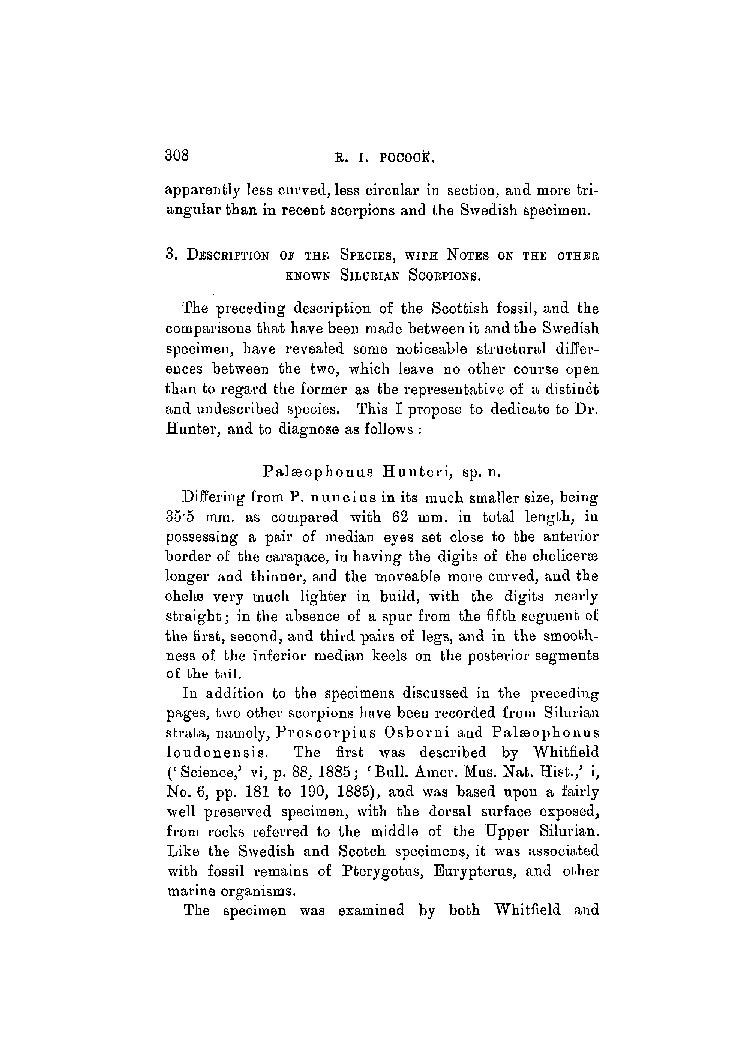apparently less curved, less circular in section, and more triangular than in recent scorpions and the Swedish specimen.
3. Description of the Species, with Notes on the other known Silurian Scorpions.
The preceding description of the Scottish fossil, and the comparisons that have been made between it and the Swedish specimen, have revealed some noticeable structural differences between the two, which leave no other course open than to regard the former as the representative of a distinct and undescribed species. This I propose to dedicate to Dr. Hunter, and to diagnose as follows:
Palæophonus Hunteri, sp. n.
Differing from P. nuncius in its much smaller size, being 35·5 mm. as compared with 62 mm. in total length, in possessing a pair of median eyes set close to the anterior border of the carapace, in having the digits of the cheliceræ longer and thinner, and the moveable more curved, and the chelæ very much lighter in build, with the digits nearly straight; in the absence of a spur from the fifth segment of the first, second, and third pairs of legs, and in the smoothness of the inferior median keels on the posterior segments of the tail.
In addition to the specimens discussed in the preceding pages, two other scorpions have been recorded from Silurian strata, namely, Proscorpius Osborni and Palæophonus loudonensis. The first was described by Whitfield ('Science,' vi, p. 88, 1885; 'Bull. Amer. Mus. Nat. Hist.,' i, No. 6, pp. 181 to 190, 1885), and was based upon a fairly well preserved specimen, with the dorsal surface exposed, from rocks referred to the middle of the Upper Silurian. Like the Swedish and Scotch specimens, it was associated with fossil remains of Pterygotus, Eurypterus, and other marine organisms.
The specimen was examined by both Whitfield and
